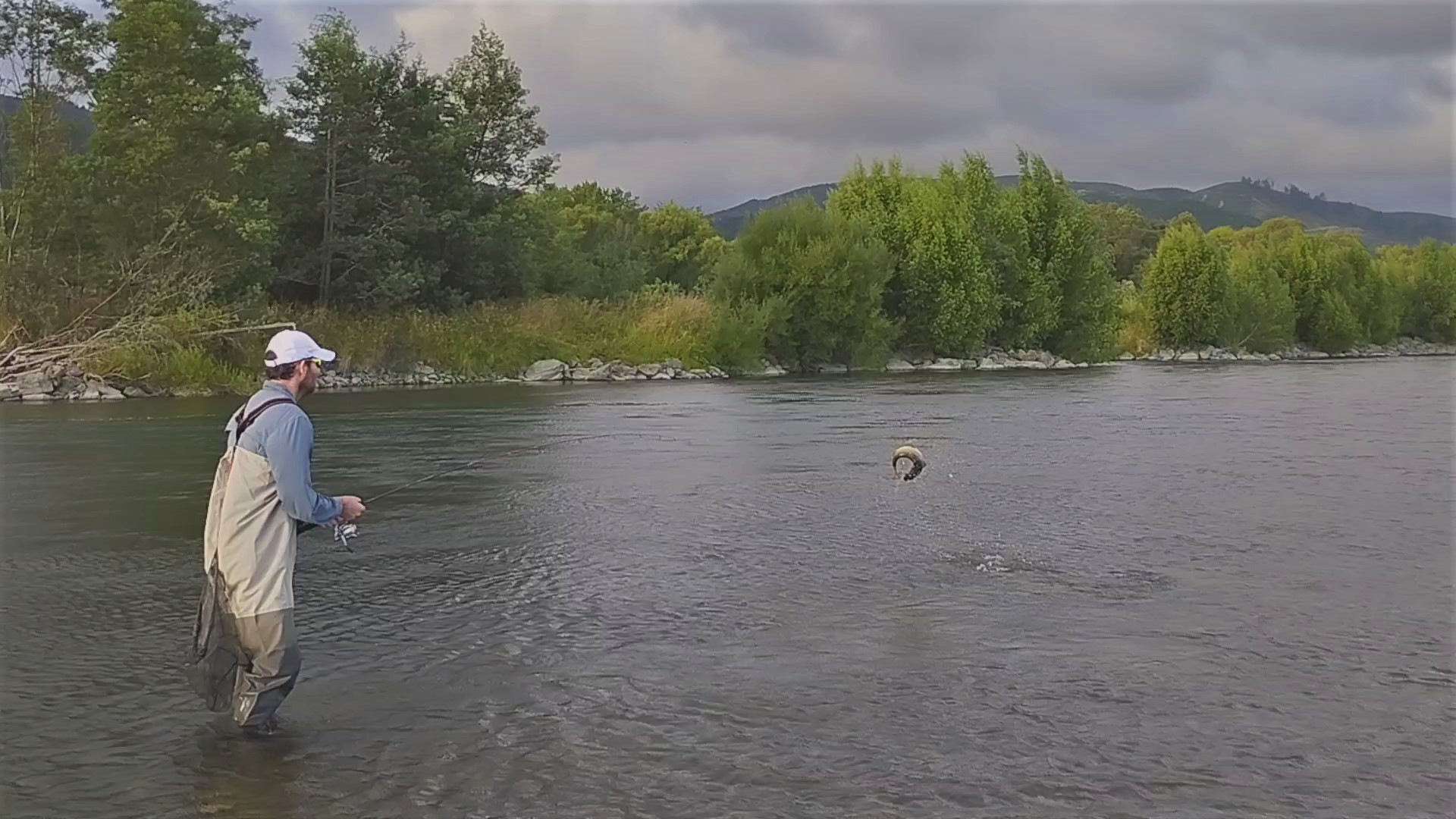Some people, no matter how many hours they spend on the water just can,t seem to catch trout, while other successful fishermen, might all of a sudden blank. A spot that was consistently producing suddenly won,t even produce a strike.
1) The trout have been spooked
When fishing behind other anglers, there is a reasonable chance that any trout already fished over are going to be more difficult to catch.
Some species, of trout, do spook more readily than others. Wild brown trout can go off the feed for several hours and remain skittish for many hours. While rainbows and brook trout seem to be a lot more forgiven.
Stock trout, are also more forgiving than wild trout. A mate and I both caught the same stock rainbow trout within an hour of each hour, I knew it was the same fish because I could see the puncture wound in its jaw.
In contrast, I have fished brown trout streams in the footprint of other anglers, and the trout will spook at any movement. They were certainly on edge. Likewise, when lake fishing, I have heard experience anglers complain about the difficulty and were blaming the conditions, but half an hour before I landed several good trout from the same section of the shoreline. Those fish were well and truly spooked.
In smaller rivers, to avoid fishing for spooked trout, try and be the first person on the river, and avoid fishing in the footprints of others.
During the peak of the summer vacation season, I nearly always fish little known rivers with poor reputations. Simply to avoid targeting trout that have already been fished over.
The solution?
Sometimes, it is not possible to have a river to yourself. Some places are so popular that there are multiple anglers on them at first light. How to target such trout? Will, the answer is to make no mistakes in your presentation, give the trout no reason to reject your nymph or fly.
This typically means longer, thinner leaders, more precise casts, and usually, but not always smaller flies. It can also be worth mixing up your fly selection slightly, fish something similar to the most popular pattern but not an exact replica.
2) The trout are no longer there
Trout move, they can be here one day and gone the next. In rivers, they might have swum upstream, or downstream. While in lakes, they might have retreated to deeper waters. Trout move a lot, and they can swim many miles in a day.
Why do trout move? Trout move for many reasons and one of the main ones is water temperature. They try to avoid water that is too cold, or too warm.
When the water warms in summer, trout try to find cooler water. This can be further upstream, or deep towards the bottom of pools.
In the winter, when the water becomes cold. Some fish search for warmer water, usually downstream in slower deeper water, and again they will seek out deeper water.
3) The water is too warm, or too cold
When the temperature is not to a trout’s liking, they are going to be difficult to catch.
While trout try to seek out water of a suitable temperature, sometimes they are unable to. So they will stick it out in areas outside their comfort zone.
In such situations, their metabolism slows, and they become reluctant to feed. This makes them extremely difficult to catch.
How to catch trout in such a situation? Well, I suggest fishing somewhere else where the water temperature is more suitable.
But, I do accept that is not always possible. When fishing for trout when water temperatures are undesirable, my best advice is to slow everything down.
4) You are fishing the wrong fly or spinner
I have seen people casting spinners toward raising trout, and wondering why they are not hooking up. The main reason why, is that the trout are feeding upon tiny insects, and not anything that resembles a lure or spinner.
Similarly, if a trout is chasing baitfish, splashing all over the place. It will most likely outright ignore even the best presented dry fly. Matching the hatch, or matching what the trout are feeding on can be very important.
While selecting the correct fly or lure pattern is important, in most situations going smaller will likely have a greater impact than changing the style. So going from a size 14 to a size 18 Adams will likely be more successful, than going from an Adams to a Royal Wulff in the same size.
Color can also make a difference if you think the size is appropriate, and the trout continue to ignore your presentations. Changing color can be helpful.
5) You are using too thick of a line
A high-diameter line might have a higher breaking strength, but that is about where its advantage ends.
When water conditions are clear, trout are more likely to see or sense thicker lines, which will make them less likely to strike.
Thicker line also creates more resistance as it moves through the water, this can cause natural drag, which is enough to convince a trout not to take a fly or nymph as it drifts by.
For these reasons, it is nearly always better to use a thinner line.

